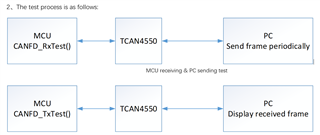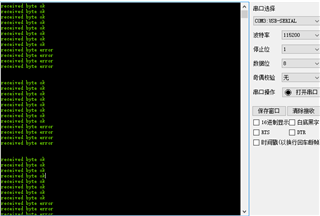Other Parts Discussed in Thread: TCAN4550
Hi teams
Customer is develop a new project with TCAN4450-Q1.
All data transimit is normal with CAN mode, with 8bit DLC.
When we configure the device in CANFD mode and DLC=12bit, only MSB 8bit data is correct in receiver side, and the LSB 4 bit always be 0xAA or some other values.
Any idea how to fix this issue?




